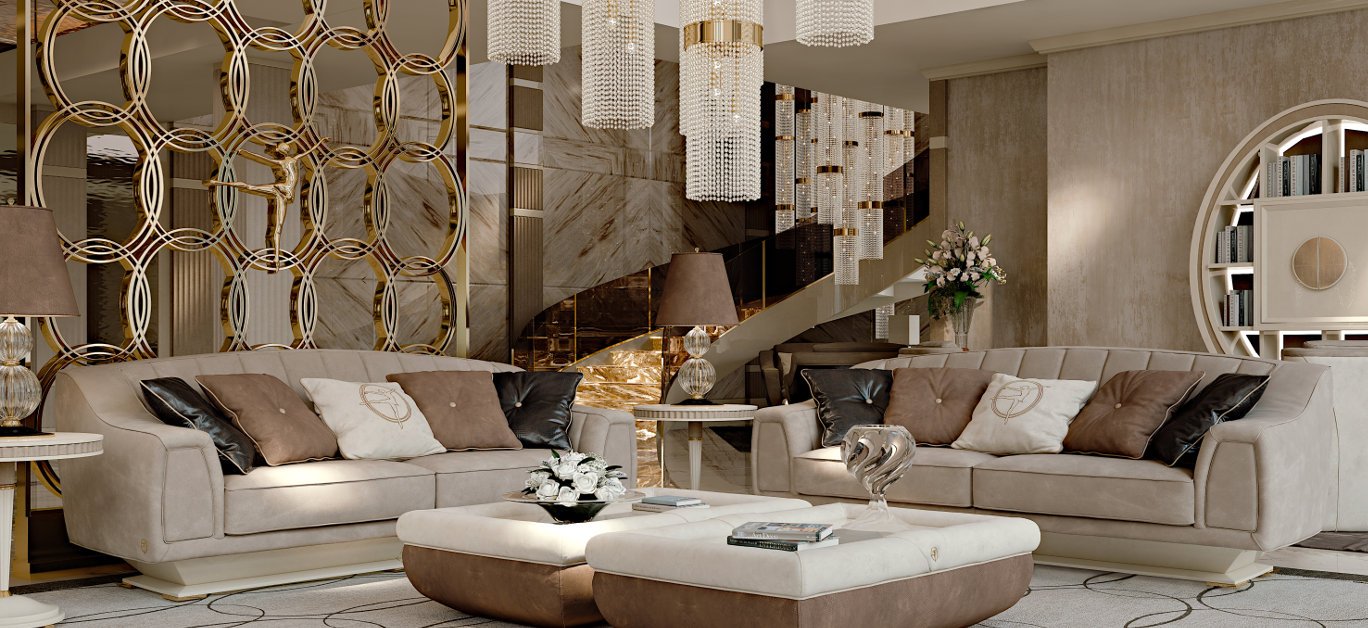In a world where personal style and comfort intersect, luxury interiors stand out as a testament to sophistication, creativity, and individual expression. Luxury interior design transcends mere aesthetics; it encompasses a lifestyle, an experience, and an understanding of the interplay between space, light, and furnishings. This article will explore the key elements that define luxury interiors, https://luxuryinteriors.org the principles of design, popular trends, and how to create a luxurious environment in your own space.
What Defines Luxury Interiors?
Luxury interiors can be characterized by several distinct features:
1. Quality Materials
The hallmark of luxury design lies in the use of high-quality materials. From natural stones like marble and granite to exotic woods and fine textiles, the selection of materials plays a crucial role in establishing a sense of opulence. Luxury interiors prioritize craftsmanship, ensuring that every element is not only beautiful but also durable and functional.
2. Attention to Detail
In luxury design, details matter immensely. Intricate moldings, custom cabinetry, bespoke furniture, and hand-crafted decor elements contribute to a unique and refined aesthetic. Each detail is thoughtfully considered to create a cohesive and harmonious environment.
3. A Sense of Space
Luxury interiors often incorporate open layouts that promote a sense of spaciousness. High ceilings, large windows, and strategic furniture placement create an airy atmosphere that feels inviting and expansive. The use of space is critical in luxury design, allowing for both functionality and comfort.
4. Personalization
Luxury interiors reflect the personality and tastes of the occupants. Customization is key, with designs tailored to individual preferences. This could mean incorporating unique artwork, family heirlooms, or bespoke furniture that resonates with the owner’s identity.
5. Sophisticated Color Palettes
The color schemes used in luxury interiors tend to be understated and elegant. Neutral tones like whites, creams, and grays serve as a canvas for bold accents or textures, creating a sophisticated atmosphere. Deep jewel tones can also be used to add richness and warmth to a space.
Key Principles of Luxury Interior Design
To create a truly luxurious interior, several design principles should be considered:
1. Balance and Harmony
Achieving balance is essential in luxury design. This can be accomplished through symmetrical arrangements or carefully curated asymmetry that guides the eye. Harmony between colors, textures, and furnishings creates a cohesive look that feels intentional and well-planned.
2. Layering Textures
Luxury interiors often incorporate a variety of textures to add depth and interest. Mixing materials like silk, velvet, leather, and wood creates a tactile experience that enhances the overall aesthetic. Layering textures also contributes to a sense of warmth and comfort in a space.
3. Lighting Design
Lighting is a crucial element in luxury interiors, not only for functionality but also for ambiance. Layered lighting—incorporating ambient, task, and accent lighting—allows for versatility and sets the mood of the room. Statement chandeliers, designer lamps, and strategically placed recessed lights can all enhance the luxurious feel of a space.
4. Focal Points
A well-designed luxury interior often features focal points that draw the eye and create interest. This could be a stunning piece of artwork, an elegant fireplace, or a unique architectural feature. Focal points help anchor the design and give the space a sense of purpose.
5. Functionality and Comfort
While aesthetics are important, luxury interiors must also prioritize comfort and functionality. Thoughtful layouts that allow for ease of movement, along with comfortable furnishings, create an inviting atmosphere. The integration of technology for convenience and comfort further enhances the luxury experience.
Current Trends in Luxury Interior Design
As with any design discipline, luxury interior design evolves with changing tastes and lifestyles. Here are some current trends making waves in the industry:
1. Sustainable Luxury
Sustainability has become a significant trend in luxury design. Homeowners are increasingly seeking eco-friendly materials and practices. This includes sourcing sustainable furnishings, using energy-efficient lighting, and incorporating biophilic design principles that connect interiors with nature.
2. Multi-Functional Spaces
With the rise of remote work and changing lifestyles, there is a growing emphasis on multi-functional spaces. Luxury interiors are now designed to serve various purposes, such as home offices, guest rooms, and recreational areas, all within the same footprint. This trend reflects a practical yet stylish approach to living.
3. Statement Ceilings
While walls often receive the most attention in interior design, statement ceilings are gaining popularity in luxury spaces. From intricate moldings to bold paint colors or wallpaper, designing the ceiling can transform a room and add an unexpected element of surprise.
4. Curved Furniture
Curves are making a comeback in luxury interiors, offering a softer and more inviting look. Curved sofas, chairs, and tables create a sense of flow and movement, contrasting the straight lines that have dominated design in previous years.
5. Darker Color Schemes
While lighter palettes have been popular, there’s a trend towards darker, moodier color schemes in luxury interiors. Rich navy blues, deep greens, and charcoal grays provide a dramatic backdrop that allows furnishings and decor to shine.
Creating Your Own Luxury Interior
Creating a luxury interior doesn’t have to involve a massive budget; it’s about making thoughtful choices and emphasizing quality. Here are some tips to help you achieve a luxurious feel in your own space:
1. Invest in Key Pieces
Instead of filling your space with numerous items, invest in a few high-quality pieces. A statement sofa, a designer chair, or a unique artwork can serve as focal points that elevate the entire room.
2. Focus on Lighting
Lighting can dramatically change the ambiance of a space. Incorporate layered lighting options, such as dimmable ceiling fixtures, stylish floor lamps, and decorative table lamps. Choose light fixtures that reflect your style, whether modern, vintage, or eclectic.
3. Incorporate Textures
Mixing different textures can create a rich and inviting atmosphere. Layer rugs, throw pillows, and blankets to add warmth. Choose materials like velvet, silk, and leather to introduce sophistication.
4. Personalize Your Space
Incorporate elements that reflect your personality and interests. This could include family photos in elegant frames, travel souvenirs, or pieces of art that resonate with you. Personal touches make your space feel truly yours.
5. Maintain Clean Lines
A clutter-free environment is essential for achieving a luxurious look. Opt for streamlined furniture and minimalist decor to keep your space looking polished. Regularly declutter and organize to maintain an air of sophistication.
6. Embrace Nature
Incorporating plants and natural elements can bring life to your interior. Choose elegant planters and select plants that complement your design. Natural light also plays a crucial role; keep windows unobstructed to maximize sunlight.
7. Consider a Neutral Base
Starting with a neutral color palette allows you to build on a solid foundation. Once you have established a calming base, you can introduce bolder colors through accessories and accents without overwhelming the space.
The Role of Technology in Luxury Interiors
Technology plays an increasingly important role in luxury interior design. Smart home systems, automated lighting, and climate control enhance comfort and convenience. Here are a few technological trends in luxury interiors:
1. Smart Home Integration
Home automation systems allow homeowners to control lighting, temperature, and security with ease. Integrating technology seamlessly into the design enhances both functionality and luxury.
2. High-Quality Audio and Visual Systems
Luxury interiors often incorporate advanced audio and visual systems for an immersive entertainment experience. Hidden speakers, projectors, and smart TVs can be elegantly integrated into the design.
3. Innovative Materials
Advancements in technology have led to the development of innovative materials that offer both style and functionality. From self-cleaning surfaces to smart textiles, these materials enhance the luxury experience.
4. Virtual Reality and Design Tools
Interior designers are increasingly using virtual reality to visualize spaces before they are constructed. This technology allows clients to experience their future interiors in immersive detail, ensuring satisfaction with the final design.
The Impact of Luxury Interiors on Well-Being
The design of our living spaces can significantly impact our mental and emotional well-being. Luxury interiors, with their emphasis on comfort, aesthetics, and personalization, can enhance our quality of life. Here’s how:
1. Stress Reduction
A well-designed, serene environment can reduce stress levels. Soft colors, natural light, and comfortable furnishings create a calming atmosphere that promotes relaxation.
2. Improved Productivity
For home offices and workspaces, luxury interiors can enhance productivity. Thoughtful layouts, ergonomic furniture, and adequate lighting contribute to a more efficient and enjoyable working environment.
3. Enhanced Creativity
Surrounding yourself with beautiful, thoughtfully designed spaces can inspire creativity. Luxury interiors often showcase art and unique design elements that stimulate the mind and encourage innovative thinking.
4. Social Connection
A luxurious environment provides a welcoming space for gatherings and social interactions. Thoughtful design encourages conversation and connection, enhancing relationships with family and friends.
Conclusion
Luxury interiors represent more than just lavish decor; they encapsulate a lifestyle marked by comfort, elegance, and personal expression. By understanding the defining characteristics of luxury design, embracing current trends, and applying thoughtful principles, anyone can create a space that feels both luxurious and inviting.



